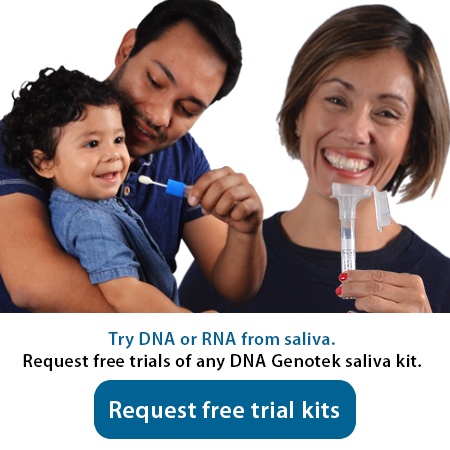2019-08-07
For decades, breast cancer prevention programs followed the traditional ‘one-size-fits-all’ approach where each patient would receive the same type of screening. Only recently has there been a call for a more personalized approach to tailor breast cancer screening methods for each patient based on their level of risk.[1]
Breast cancer is the leading cause of cancer death for women in the world. Up to 25% of breast cancer cases may be hereditary, where 20% of those cases are from defects in high penetrance genes such as BRAC1, BRAC2, TP53, and 5% from intermediate penetrance genes such as CHEK2, ATM, APLB2, and RAD50. [2]
In the early days of breast cancer screening, mammography (x-ray of the breasts) was incorporated in the standard screening programs. Mammographic density was considered an important risk factor for breast cancer. However, the “one-size-fits-all” traditional approach can be incredibly harmful.[2]
- Women with low risk of breast cancer are undergoing unnecessary x-ray screenings.
- Women with higher risk of breast cancer are undergoing too long screening intervals instead of receiving necessary examinations by ultrasound and magnetic resonance imaging (MRI) right away.[2]
New methods of risk-based screening are beginning to garner attention, where screening would be tailored to each individual based on their level of risk. Currently, national breast cancer screening programs are non-personalized and individual risks are not taken into account. There are many methods to detect serious risk such as percent mammographic breast density (PMD), structural features, familial history, and genetic variants. Currently, mammography is typically used in the standard screening process.[2]
Genetic testing: the new solution to risk-based screening
Poehls et al. argues that genetic testing will offer a suitable way to maximize safety and minimize harm throughout breast cancer screening. According to Poehls et al, so far, there is no plan to implement genetic testing for breast cancer screening in Europe.[2] Throughout the years there has been increasing evidence that varying single nucleotide polymorphisms (SNPs) correlated with increasing PMD and overall breast cancer risk. Since there is a strong correlation between them, breast cancer screening standards shouldn’t just only be mammography screening.[2]
Saliva DNA for breast cancer screening
Traditionally, blood tests have been widely used. Blood sample collection can have a low acceptance rate due to its invasiveness, and therefore can be difficult to implement on a large scale. Therefore, non-invasive methods are often utilized instead.
Saliva DNA contains 30% leukocytes making it comparable to blood in terms of DNA quality, it is a non-invasive method of collection and can introduce genetic testing in a large scale for breast cancer screening.[2]
In Poehls et al.’s study they collected saliva samples using Oragene·DNA from 67 women in Germany to research how genetic testing could be used for breast cancer screening (Germany is reported to have the highest mortality rate for breast cancer in the world since 2013). At first they tested the quality of the DNA and resulted in a suitable quantity and quality of DNA comparable to other studies.[2]
In order to compare blood and saliva samples, they collected from 3 known individuals who carried both the BRAC1 and BRAC2 mutations. They confirmed the identical BRAC1 and BRAC2 mutations in DNA from saliva and from blood from the same individual. Therefore, saliva DNA was sufficient enough for the detection of the mutations and for high throughput genotyping.[2]
Based on a survey, the women in the study accepted the idea of saliva DNA for genetic testing due to its ease and non-invasive nature compared to blood. [2] Older studies, (Adamkova et al.) showed that patients would accept genetic testing for breast cancer research depending on the sample type, where saliva had the highest acceptance rate. [3]
In conclusion
Genetic testing with the right sample methods might help detect individuals at a high risk who need intense surveillance and women at low risk who should avoid needless x-rays and long screening intervals.[2]
If you are interested in trying free samples of Oragene·DNA self-collection saliva kits for your own research project, click on the free kits request button or email info@dnagenotek.com.
Related Blogs: More DNA samples in less time for BRCA 1 and BRCA 2 research project; Patients, doctors and scientists collaborate on genetic research study for metastatic breast cancer
References
[1] He X et al. How do women view risk-based mammography screening? A qualitative study. J Gen Intern Med. 33(11):1905-12 (2018).
[2] Poehls et al. Saliva samples as a source of DNA for high throughput genotyping: an acceptable and sufficient means in improvement of risk estimation throughout mammographic diagnostics. Euro J Med Res. 23:20 (2018).
[3] Adamkova V et al. Volunteer’s willingness to genetic testing – lack of the understanding of the matter. Physiol Res. 58(1):S53-4 (2009).


